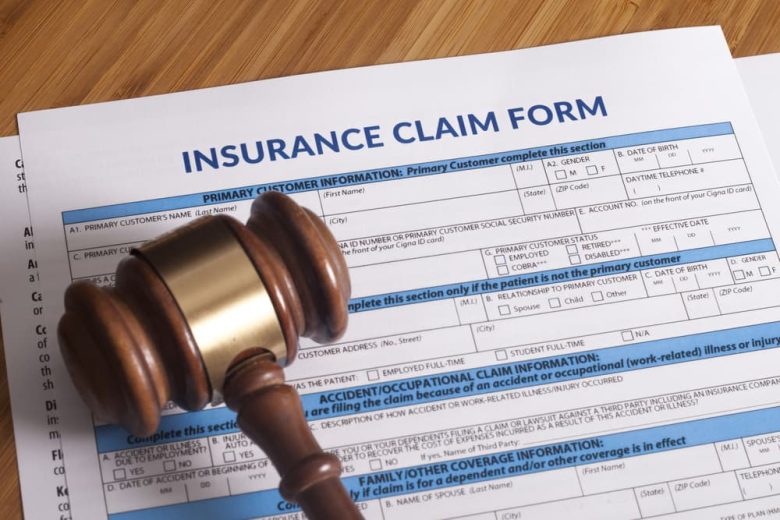Every driver should be pretty good at handling their auto insurance claims. Knowing how to file a claim properly can significantly reduce stress and speed up the process of getting your car back on the road if it’s been involved in an accident or damaged. As one of the largest auto insurance companies in the United States, Geico has developed a simple claims system designed to help policyholders process claims efficiently. This page provides a comprehensive overview of how to negotiate the Geico auto insurance claims process so you can maximize your experience and know what to expect.
1. Actions Taken Immediately After the Accident
While the minutes following an accident can be confusing and tiring, it’s important to stay calm and take the right actions. The most important thing is to make sure everyone is safe. If you are injured, call 911 for medical assistance. Once you’ve confirmed that everyone is safe, share names, contact information, insurance information, and vehicle details with the other driver or the driver involved. Additionally, careful documentation of the accident scene is crucial. Take a photo of the vehicle involved, the surrounding area, and any visible damage. This evidence is crucial when filing a claim with Geico.
2. Consider the Geico Incident
Your next step is to notify Geico of the incident after you have confirmed that everyone is safe and has gathered the required information. You can do this by calling Geico’s claims department, using their mobile app, or visiting their website. Geico claims representatives are available 24/7, making it easy to report an accident at any time. When reporting an incident, be sure to provide complete information, including the date and time of the incident, the location, the description of the incident, and any documents you have gathered.
3. Understand the Roles of a Claims Adjuster
Once you have filed your claim, Geico will assign a claims adjuster to handle your case. Investigating the accident, assessing the damage, and determining the legitimacy of the claim—all handled by a claims adjuster—makes them a crucial part of the claims process. The adjuster may contact you to ask for more details or clarification about the situation. Fully cooperating and providing any necessary documentation or information is crucial. Keep in mind that the more open and honest you are, the easier it will be for the adjuster to process your claim.
4. Explore Methods
Once assigned, the adjuster will begin an investigation. Reviewing accident reports, interviewing witnesses, reviewing photos, and perhaps viewing the wrecked car can all be part of the process. The adjuster will assess the extent of the damage to your car and determine whether your insurance will cover the collision. Depending on the complexity of the case and the availability of the necessary information, this phase can take some time. Keeping in touch with your adjuster during this time will help keep you updated on the status of your claim.
5. Dispute and Appeal Management
Occasionally, disagreements about the outcome of a claim can be due to coverage conflicts, a finding of fault, or the extent of the impact of a loss assessment. If you find that you disagree with the claims adjuster’s conclusions, you should express your concerns. Geico offers consumers the opportunity to appeal a decision if they believe their claim was mishandled. To file an appeal, you must clearly state your concerns and any supporting evidence. Geico will review your case and you may be able to discuss the matter with another claims attorney.
6. Keep Records of the Entire Process
As you negotiate the claims process, you must keep complete records of all communications with Geico and all other parties involved in the claim. This includes phone records, copies of emails, and other documents related to the accident, including medical records or police reports. Keeping organized records not only keeps you informed but also provides important evidence should a conflict arise during the claims process.
7. Evaluate Your Coverage and Limitations
Understanding your insurance policy can simplify the claims process. Learn about the different types of coverage you have: liability, collision, comprehensive, uninsured motorist, and more. Knowing your insurance limits can help you have reasonable expectations for the claims process. If your policy has a deductible, provide your out-of-pocket expenses before Geico pays the remaining amount. This information will help you make informed decisions and strengthen your position during the claims process.
8. Advice on the Perfect Claims Process
There are many things to consider to ensure a smooth Geico claims process. First, file your claim immediately and document the collision. The sooner you start, the faster the process will be resolved. Second, communicate honestly and often with your adjuster. Building a good rapport can help you achieve better results. Additionally, be thorough in providing data and documentation to support your claims. Finally, keep track of all correspondence regarding your claim and stay organized.
Conclusion
Negotiating the Geico auto insurance claims process can be a reasonable experience if you understand the procedures involved and what to expect. From reporting accidents to contacting an adjuster, every action is geared toward a speedy recovery after an accident. You can negotiate the claims process with confidence by staying organized, proactive, and resourceful. Remember that the claims process is designed to help you return home safely and minimize disruption to your daily life. With these thoughts and observations, you can handle any claims-related situations.
FAQs
1. What does an adjuster do?
To investigate the accident, assess the damage, and determine if your claim is valid, the adjuster will assess the situation and may be contacted to ask further questions or explain the situation.
2. How long does the claims process typically take?
The complexity of the case and the availability of information will affect the length of the claims process. Generally, simpler claims are resolved more quickly than more complex claims. However, this may depend on your circumstances.
3. What if I disagree with the adjuster’s decision?
If you disagree with the adjuster’s decision, you can voice your concerns and provide all relevant information for an appeal. Geico asks policyholders to ask themselves what they believe is poor judgment.
4. How do I check the status of my claim?
You can check the status of your claim by using the Geico mobile app, contacting your adjuster regularly, or visiting their website for updates.
5. Are there resources to help me through the claims process?
Geico offers a variety of resources on its website, including FAQs, tutorials, and advice on filing claims. There are also numerous features in their mobile app for tracking claim status and incident reporting.




